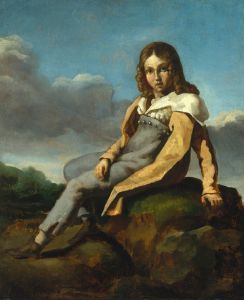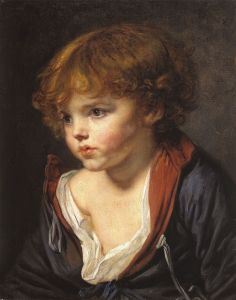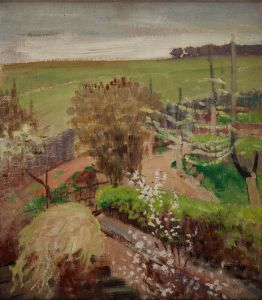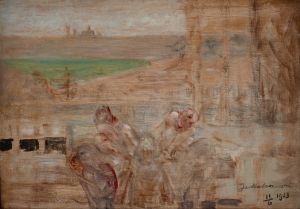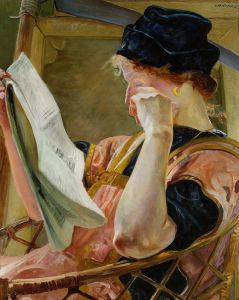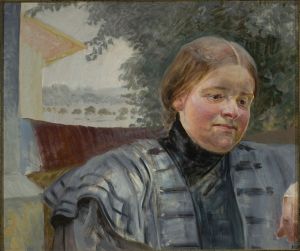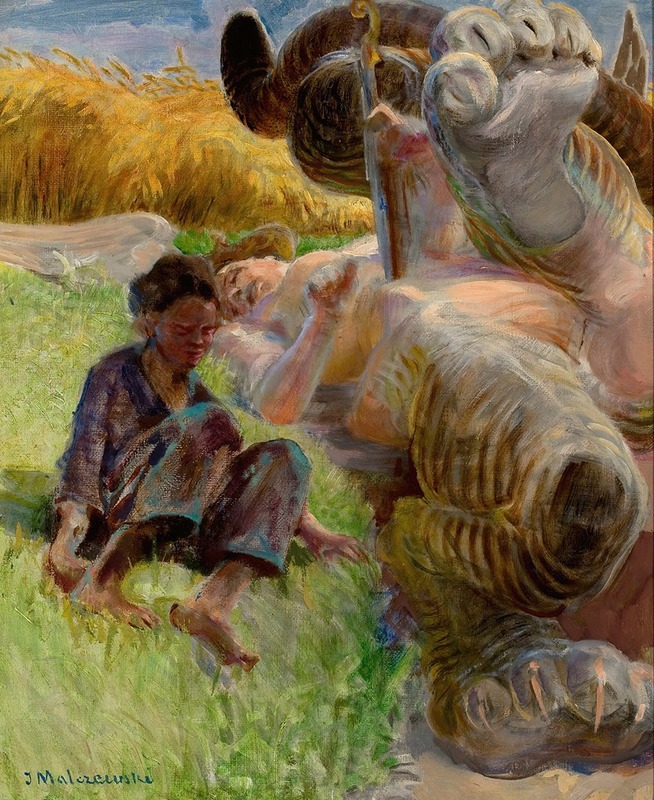
Shepherd boy and a harpy
A hand-painted replica of Jacek Malczewski’s masterpiece Shepherd boy and a harpy, meticulously crafted by professional artists to capture the true essence of the original. Each piece is created with museum-quality canvas and rare mineral pigments, carefully painted by experienced artists with delicate brushstrokes and rich, layered colors to perfectly recreate the texture of the original artwork. Unlike machine-printed reproductions, this hand-painted version brings the painting to life, infused with the artist’s emotions and skill in every stroke. Whether for personal collection or home decoration, it instantly elevates the artistic atmosphere of any space.
Jacek Malczewski, a prominent Polish painter associated with the Symbolist movement, created the painting "Shepherd Boy and a Harpy" in 1908. Malczewski is renowned for his unique style that often blends elements of Polish folklore, mythology, and national history, reflecting the socio-political context of Poland during his lifetime. His works frequently explore themes of existentialism, patriotism, and the human condition, often through allegorical and fantastical imagery.
"Shepherd Boy and a Harpy" is a compelling example of Malczewski's symbolic and allegorical approach to painting. The artwork features a young shepherd boy, a recurring figure in Malczewski's oeuvre, symbolizing innocence and the pastoral ideal. The shepherd boy is depicted in a serene landscape, which is characteristic of Malczewski's use of natural settings to evoke a sense of tranquility and introspection. The presence of the harpy, a mythological creature with the body of a bird and the face of a woman, introduces an element of tension and mystery to the scene. In classical mythology, harpies are often portrayed as malevolent beings, but Malczewski's interpretation may suggest a more nuanced interaction between the human and the mythical.
The juxtaposition of the shepherd boy and the harpy can be interpreted in various ways, reflecting Malczewski's interest in the dualities of human nature and the intersection of reality and fantasy. The painting invites viewers to contemplate the relationship between innocence and corruption, the natural and the supernatural, and the known and the unknown. This complexity is a hallmark of Malczewski's work, which often encourages multiple interpretations and a deeper engagement with the symbolic content.
Malczewski's technique in "Shepherd Boy and a Harpy" showcases his mastery of color and composition. The use of light and shadow, along with a muted color palette, creates a dreamlike atmosphere that enhances the painting's symbolic resonance. The detailed rendering of the figures and the landscape demonstrates Malczewski's skill in blending realism with imaginative elements, a characteristic feature of his artistic style.
Throughout his career, Jacek Malczewski remained deeply connected to his Polish heritage, and his works often reflect the cultural and historical milieu of Poland in the late 19th and early 20th centuries. "Shepherd Boy and a Harpy" can be seen as part of this broader narrative, where Malczewski uses mythological and allegorical themes to explore issues of identity, morality, and the human experience.
The painting is housed in the National Museum in Warsaw, Poland, where it continues to be an important part of the collection, attracting both art enthusiasts and scholars interested in Symbolism and Polish art history. Malczewski's work, including "Shepherd Boy and a Harpy," remains influential, offering insight into the complexities of human nature and the power of myth and symbolism in art.





